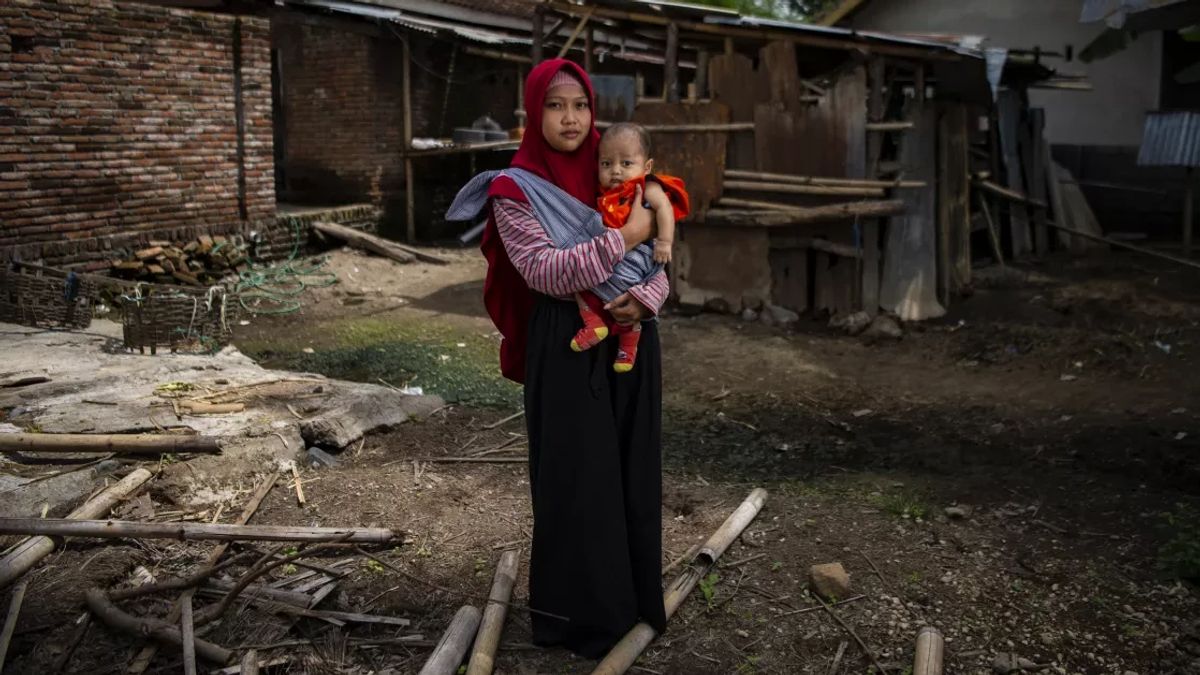JAKARTA Child mortality from pneumonia in Indonesia is even quite high in the world, even though this is a preventable disease.
Launching Ai Care, pneumonia is a lung infection caused by various types of bacteria, such as Streptococcus pneumoniae, HiB, and others. In addition to bacteria, pneumonia can also be caused by viruses or fungi that attack the child's respiratory tract and spread through direct contact of respiratory fluids such as droplets, saliva, or mucus.
Pneumonia is often also known as wet lungs. In this condition, the airway is filled with liquid or pus, causing a person to have difficulty breathing.
Babies and children are classified as susceptible to pneumonia. In children, this disease can be very dangerous because their immune system is still developing. Children with pneumonia are at risk of lung damage, higher complications and risks including respiratory failure.
For most people, pneumonia is associated with adult disease. But in reality, according to a United Nations Children's Fund (UNICEF) report, pneumonia is an infectious disease that contributed the largest death to children under five years old (toddlers) in the world in 2021. The figure reached 725,557 cases in 2021. UNICEF said that this number had fallen 54% from 2000 which reached 1,590,874 deaths.
Member of the Tuberculosis Expert Committee of the Ministry of Health, Dr. dr. Nastiti Kaswandani, Sp.A(K) said pneumonia could endanger lives as lung function disorders.
"It causes the child to be congested so that if it continues, there will be a shortage of incidents in all organs, causing death," said dr. Nastiti in a media seminar on pneumonia in children organized by the Central Board of the Indonesian Pediatrician Association (IDAI), Thursday (11/1/2024).
According to UNICEF, each year the disease takes the lives of more than 725 thousand children under the age of five, including 190 thousand newborns who are very susceptible to infection.
Every day, at least one child dies every 43 seconds due to pneumonia. Almost all of these deaths can be prevented, "said UNICEF's statement.
Indonesia is one of the countries with the highest pneumonia death rate in the world. Indonesia was ranked sixth after UNCEF recorded 19 thousand deaths from pneumonia in 2018. Nigeria's first position was with 126,000 deaths, followed by India, Pakistan, the Republic of Congo, and Ethiopia.
This means that the death rate of children from pneumonia is higher than other diseases, with diarrhea causing death of only 437 thousand children under five, while malaria claimed the lives of 272 thousand children.
Like COVID-19, pneumonia is an easy disease to spread because it can be transmitted through droplets or saliva splashes. Symptoms of pneumonia in children can be seen from the fastness of breath and shortness of breath, fever, vomiting, vomiting nausea, and experiencing a fever of 39 degrees or more.
As mentioned earlier, pneumonia can be prevented with various protective measures, such as adequate nutrition and reducing risk factors such as air pollution, as well as implementing hygiene practices. In addition, exclusive breastfeeding during the first six months of birth can also help prevent pneumonia in children.
"When not providing exclusive breast milk, it can increase the risk of pneumonia compared to those who get exclusive breast milk for six months," said dr. Nastiti.
"When we try to prevent how to prevent children from pneumonia, then of course with exclusive brakefeeding," he added.
Dr. Nastiti said that exclusive breast milk can reduce the risk of pneumonia in children by up to 20 percent. The benefits of breast milk have been studied by a number of experts, so that children who get exclusive breast milk are said to have better immunity.
In addition to breast milk, complete vaccination can also help prevent pneumonia. Unfortunately, according to WHO data, 40 percent of children worldwide do not get the main vaccine to prevent pneumonia, namely the Pneumococcal (PCV) vaccine. In addition, other vaccines such as Diphteria-Tetanus-Pertussis (DPT) and the Hemophilus Influenza B (Hib) vaccine also protect children from pneumonia.
Air pollution can significantly increase the risk of respiratory infection, including pneumonia. WHO data says nearly half of the death toll from pneumonia is caused by air pollution.
"Climate crisis is a children's rights crisis and poses a serious threat to children's health and well-being," WHO wrote on its official website.
So far, the public thinks that air pollution only occurs outdoors, such as those from motorized vehicle smoke, industrial waste, and others. Even though the pollution from inside the house is no less dangerous.
Doctor Nastiti said that so far there are still many people who do not realize the dangers of pollution from home. In fact, pollution is most likely produced alone at home every day.
In addition to cigarette smoke, pollution in the house can also be produced from firewood or charcoal briquettes that are still used for cooking, especially in areas.
Smoke from the kitchen, for example, such as roasting, burning food, this is actually pollution that people often don't realize, dr. Nastiti explained.
SEE ALSO:
Regarding the dangers of pollution at home, WHO has also often echoed it. Outdoor air pollution is a risk for children, especially with the increasing rate of urbanization in countries with high pneumonia burdens," the world health agency wrote.
"However, indoor air pollution, produced by unclean fuel for cooking and heating is also a global threat," the WHO statement continued.
The English, Chinese, Japanese, Arabic, and French versions are automatically generated by the AI. So there may still be inaccuracies in translating, please always see Indonesian as our main language. (system supported by DigitalSiber.id)














